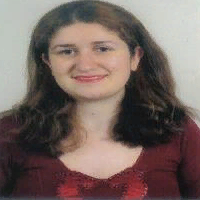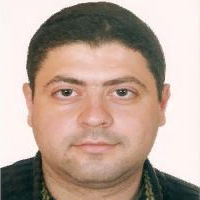International Journal of Image, Graphics and Signal Processing (IJIGSP)
IJIGSP Vol. 7, No. 7, 8 Jun. 2015
Cover page and Table of Contents: PDF (size: 606KB)
Author(s)
Index Terms
Tomography deblurring, convex optimization, wavelet regularization, linear inverse problem
Abstract
In this paper we aim to solve a problem of image reconstruction in tomography. In medical imaging, patients suffer from taking high dose of radioactive drug in order to get a well-qualified image. Our goal is to reduce this dose of radioactive drug given to the patients in PET scan and to get a well-qualified image. We use to modeling this problem using a convex function to minimize. In tomography, real problem requires a positive constraint and may get a blurred image due to poisson noise. Then, in order to get back a non blurred image of human body, we add to this function a wavelet regularization which is a non differentiable function. We introduce specific algorithms to get the minimum of the global function obtained. After presenting the classic algorithms with their conditions to solve the problem we find that Chambolle Pock's algorithm requires less properties than these algorithms and gives good results. Then, we propose its computation method with the proof.
Cite This Paper
Rose F. Sfeir, Charbel H. Julien,"Tomographic Convex Time-Frequency Analysis", IJIGSP, vol.7, no.7, pp.33-41, 2015. DOI: 10.5815/ijigsp.2015.07.05
Reference
[1]Y.Nesterov. Introductory lectures on convex optimization a basic course, Vol. 87, 2004.
[2]P. L. Combettes and V. R. Wajs, Signal Recovery by proximal forward-backward splitting: Multiscale Modeling and Simulation, 4 (4): 1168-1200, November 2005.
[3]A. Beck and M. Teboulle, "A fast Iterative Shrinkage-Thresholding Algorithm for Linear Inverse problems", 2009.
[4]I. Daubechies, M. Defrise and C. De Mol, " An iterative thresholding algorithm for linear inverse problems with a sparsity constraint", Comm. Pure Appl. Math, 57, pp. 1413-1541, 2008.
[5]A. Chambolle T. Pock, " A First-Order Primal –Dual Algorithm for Convex Problems with Applications to Imaging", december 2010.
[6]F.-X. Dupé, J. Fadili and J.-L. Starck, A proximal iteration for deconvolving poisson noisy images using sparse representations, IEEE TIP, Vol.18, 2009.
[7]J.J.Moreau, Proximité et dualité dans un espace Hilbertien, 1965.
[8]Mário Figueiredo and Robert D. Nowak, An EM Algorithm for Wavelet-Based Image Restoration, IEEE Transactions on Image Processing, Vol.12, no.8., August 2003.
[9]A.Cohen, M. Hoffmann and M. Reib "Adaptative Wavelet Galerkin Methods For Linear Inverse Problems". SIAM, 2003.
[10]A. K. Nain, S. Singhania, S. Gupta and Bharat Bhushan, "A comparative Study of mixed noise removal techniques", International Journal of Signal Processing, Image Processing and Pattern Recognition, Vol.7, no.1, pp.405-414, 2014.
[11]H. Jiang, Z. Wang, L. Ma, Y. Liu, P. Li. A novel method to improve the visual quality of X-ray CR Images. International Journal of Image, Graphics and Signal Processing, Vol.3, no.4, June 2011.
[12]A. A. Mahmoud, S. El Rabaie, T.E. Taha, O. Zahran, F. E. Abd El –Samie, W. Al-Nauimy, "Comparative study of different denoising filters for speckle noise reduction in ultrasonic B-mode". International Journal of Image, Graphics and Signal Processing, Vol. 5, No.2, February 2013.
[13]V. Naga Prudhvi Raj and T. Venkateswarlu, M.E. "Denoising of Poisson and Rician Noise from Medical Images using Variance Stability and Multiscale transforms". International Journal of Computer Applications, Vol 57/21, November 2012.
[14]V. N. Prudhvi Raj and Dr. T. Venkateswarlu, "Denoising of Medical Images using Total variational Method", Signal & Image Processing: An International Journal, Vol.3, No.2, April 2012.
[15]R. Zanella, P. Boccacci, L. Zanni and M Bertero.Ye. "Efficient gradient projection methods for edge-preserving removal of Poisson noise". IOP Science, Inverse Problems. Vol 25, No 4, February 2009.

